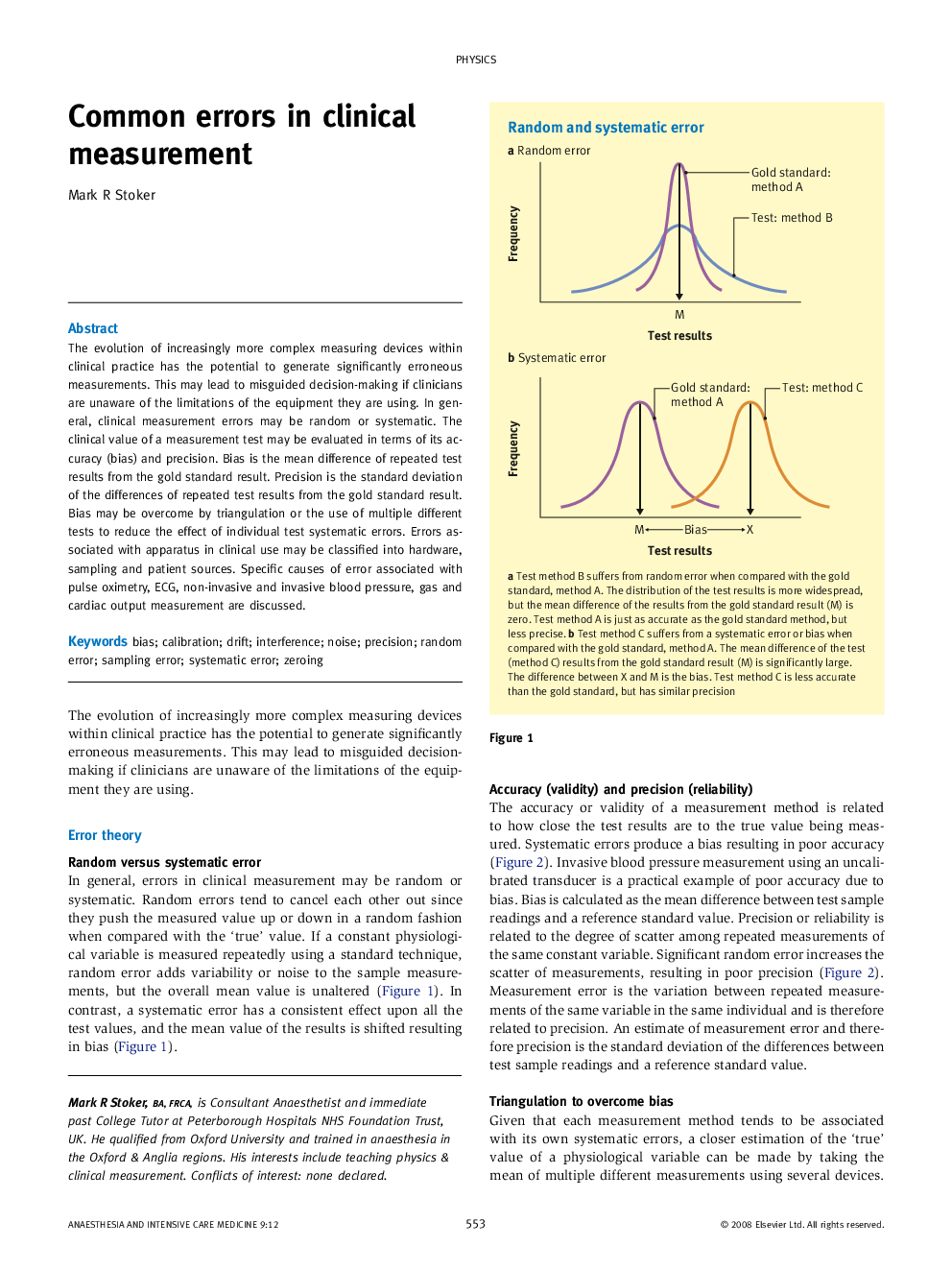| Article ID | Journal | Published Year | Pages | File Type |
|---|---|---|---|---|
| 2743395 | Anaesthesia & Intensive Care Medicine | 2008 | 6 Pages |
Abstract
The evolution of increasingly more complex measuring devices within clinical practice has the potential to generate significantly erroneous measurements. This may lead to misguided decision-making if clinicians are unaware of the limitations of the equipment they are using. In general, clinical measurement errors may be random or systematic. The clinical value of a measurement test may be evaluated in terms of its accuracy (bias) and precision. Bias is the mean difference of repeated test results from the gold standard result. Precision is the standard deviation of the differences of repeated test results from the gold standard result. Bias may be overcome by triangulation or the use of multiple different tests to reduce the effect of individual test systematic errors. Errors associated with apparatus in clinical use may be classified into hardware, sampling and patient sources. Specific causes of error associated with pulse oximetry, ECG, non-invasive and invasive blood pressure, gas and cardiac output measurement are discussed.
Related Topics
Health Sciences
Medicine and Dentistry
Anesthesiology and Pain Medicine
Authors
Mark R. Stoker,
